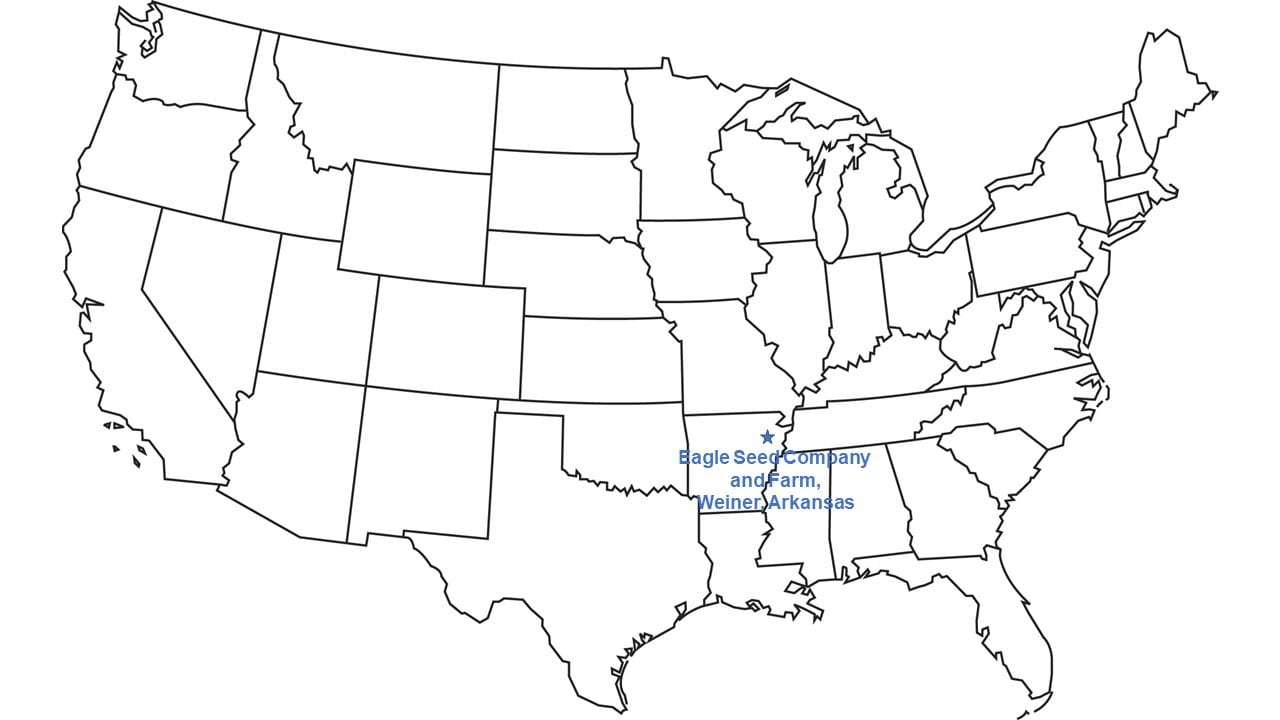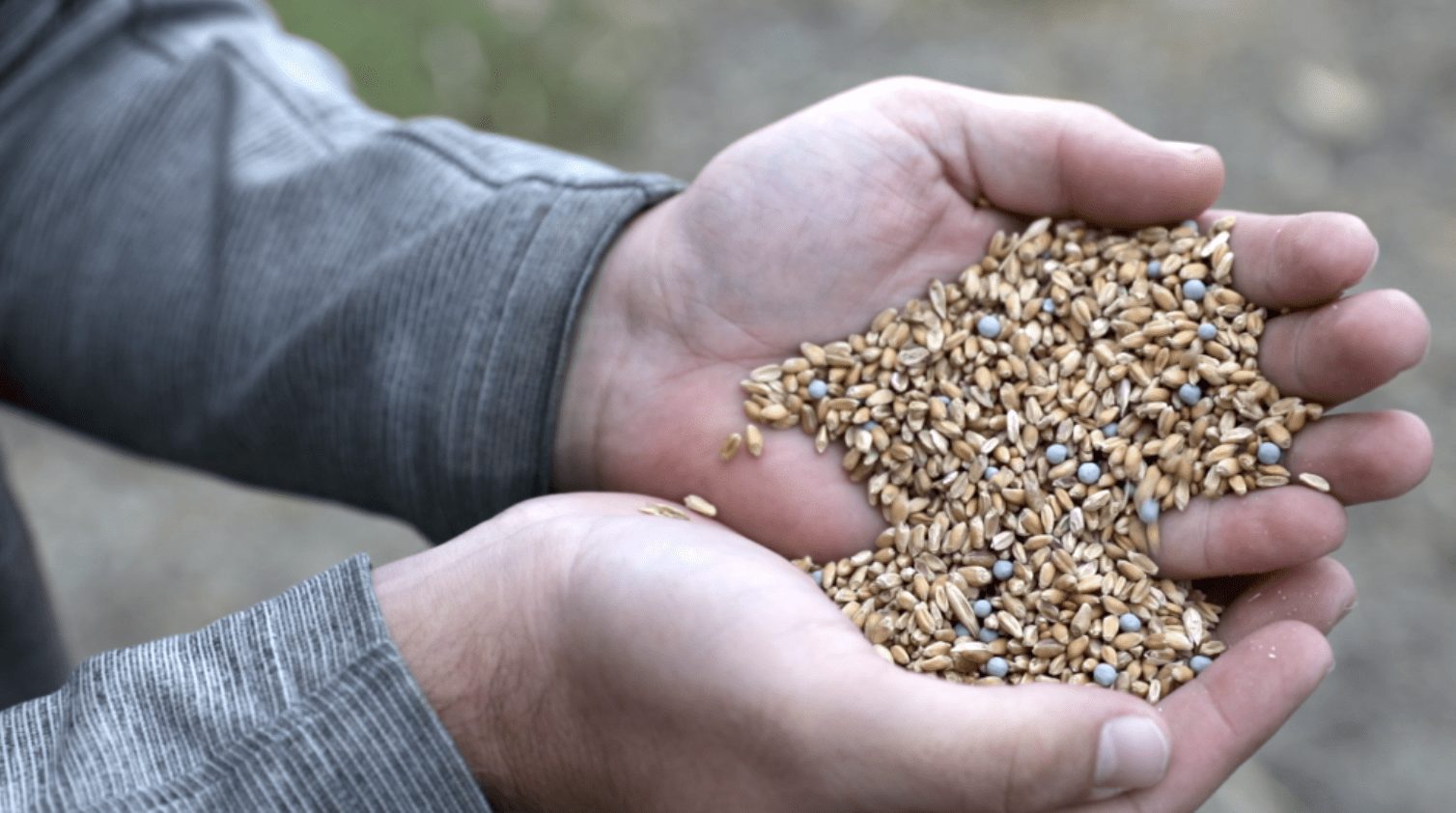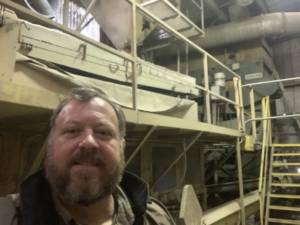
Our 2020 harvest went reasonably well. We finished cutting our commercial soybean seed fields on November 18. The research and breeding program plots took a bit longer to harvest, but we finished harvesting them by the end of November.
Yields were average, but the soybean seed quality was good to excellent, which is our top priority. Planting late like we did this year usually reduces yields a bit, but improves quality. Our focus throughout harvest was on seed quality. We pay attention to the moisture level, which was good throughout harvest, about 14% required for storage. We also adjust our combines when harvesting to minimize mechanical damage to the seed.
We have started sending samples from specific commercial fields to our state laboratory to certify their germination rate. This step takes about a week, and it is required by law for Eagle Seed to be able to sell our seed to other farmers next season. And, we want to be sure the seed will germinate before we invest in cleaning it. So far, our germination rates look good.
Now our seed business focuses on preparing for winter – and next spring. We started cleaning soybean seed at our seed plant and warehouse in early November. We store seed soybeans in dry bulk tanks after harvest, until it is ready to be cleaned.
First, soybeans go through our air screen cleaner. Screens with varying sizes of holes allow debris to be separated from the soybeans. Large screens hold stems, pods, leaves and other large foreign material while the crop falls through. Then smaller screens allow dirt, small rocks, and other foreign material to fall through the bottom. Throughout this process, air blowing through the screens starts removing dust from the seed.
Then our gravity table further cleans the soybeans. The large flat surface is tilted to allow gravity to separate soybeans and any remaining foreign material by density. This allows us to remove poor quality soybeans and size the seed, if needed.
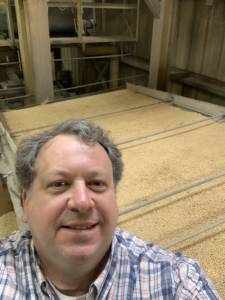 The clean seed is returned to clean bulk tanks or bags for storage and it can be delivered as our customers request it. We typically clean seed constantly from the time we start in November until the end of January. And additional cleaning will be done as needed to fulfill farmer orders. We work hard to keep our warehouse clean – free of insects and rodents – and dry to maintain soybean seed quality and prevent seed damage.
The clean seed is returned to clean bulk tanks or bags for storage and it can be delivered as our customers request it. We typically clean seed constantly from the time we start in November until the end of January. And additional cleaning will be done as needed to fulfill farmer orders. We work hard to keep our warehouse clean – free of insects and rodents – and dry to maintain soybean seed quality and prevent seed damage.
Our facility includes a seed treater, so we can treat the seed with growth regulators and pesticides as farmers request. By February, we will be delivering seed to customers so they can plant the 2021 crop.
We also test our soybean varieties for protein, specific amino acids, oil content and more. We are paying attention to what our customers want during the virtual meetings we participate in with buyers from around the world. We send customers our best soybeans, and we want our breeding program to constantly evolve to meet their needs, like composition, color or size.
Throughout this winter, we will meet with farmers, soybean buyers and others in the industry to continue learning, listening and improving for the future. Unfortunately, most of this will happen virtually. For example, I am co-chair of the 2021 Commodity Classic, an annual event where farmers from throughout the U.S. get together to network and learn about new technology and practices. In March 2021, it will be held virtually instead of in-person.
We are also getting our fields ready for winter – and next spring. We don’t do any fall tillage, but in many of our fields, we clean out the surface drainage ditches to allow them to drain throughout the winter. That helps our heavy soil manage the moisture we get throughout the winter and then dry out so we can prepare seedbeds again next spring.
We did no-till plant winter wheat in a few fields. Without disturbing the soil other than to plant the seed, this wheat follows soybeans. We applied fertilizer to help the crop get started, and we applied herbicide to control winter weeds that were already showing up in the fields. This wheat will be harvested in mid-June, and then we will double-crop soybeans in those fields.
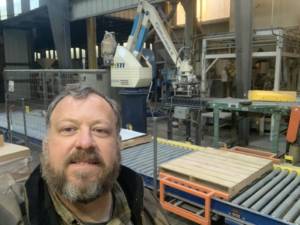
In roughly 25% of our fields, we will shut the drains and allow water to collect for the next few months. This creates large, shallow lakes that are ideal habitat for migrating waterfowl like ducks that move south to our region. They will overwinter in these fields, eating what was left in the field and the invertebrates that thrive on the decaying plant material in the water. To manage the wildlife population, hunting is permitted in these areas. It’s a unique way most farms in our region participate in wildlife conservation. We typically allow those fields to start draining in February so the fields can dry out and be prepared for the next crop.
And that is the full crop cycle for Eagle Seed and our family farm. It has been a privilege to share 2020 through these updates: preparing fields, planting, managing water and weeds, monitoring growth, breeding soybeans, managing weather, and harvesting next year’s seed.
Eagle Seed Company is proud to be an independent, family-owned soybean breeding and seed business. As an essential business, we have been fully operational throughout 2020 and the COVID-19 pandemic, providing seed and support for farmers to continue supplying the high-quality soy our customers expect.
We continue working hard for our customers, but we miss seeing them in person. Hopefully that will be an option sometime next year!
